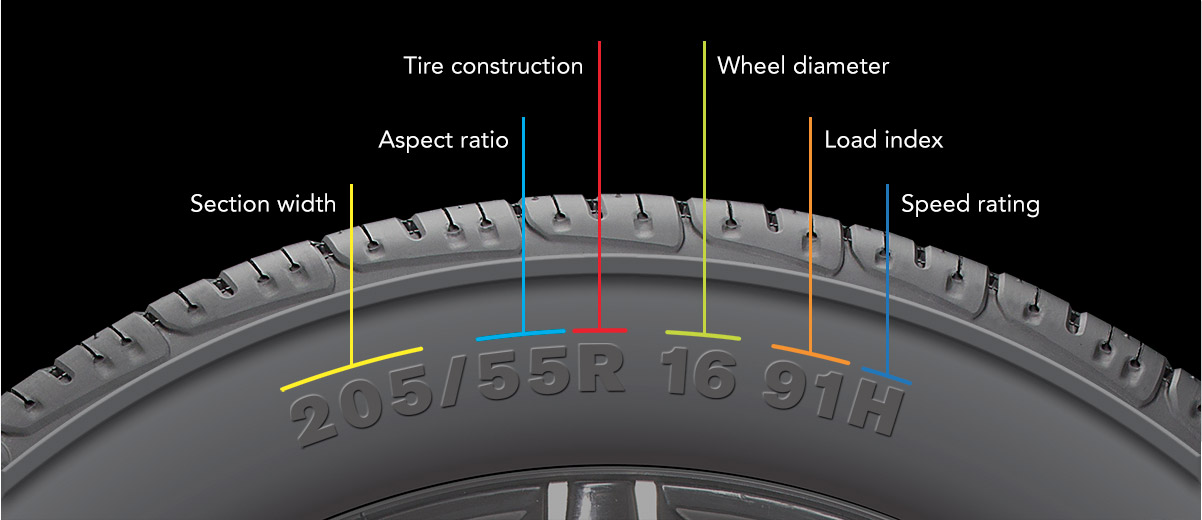Decoding Your Wheels: A Guide to Finding Your Rim Size
Ever wondered what those numbers on your tire sidewall mean? Or maybe you're thinking about upgrading your wheels and aren't sure where to start? Knowing your car's rim size is crucial for safe and efficient driving, and it's surprisingly easy to figure out. This guide will walk you through various methods, from deciphering the cryptic code on your tires to using handy online resources.
Understanding your wheel size isn't just about aesthetics; it directly impacts your car's performance, handling, and safety. The wrong rim size can lead to everything from speedometer inaccuracies to tire rubbing and even potential damage to your vehicle. So, whether you're a seasoned car enthusiast or a new driver, knowing how to identify your rim size is a fundamental piece of car ownership knowledge.
The history of identifying rim sizes is intertwined with the evolution of the automobile itself. As cars became more complex, so did the need for standardized measurements. Initially, rim sizes were a much simpler affair, but with advancements in tire technology and the pursuit of improved performance, the system evolved into the complex coding we see today. The importance of correctly determining your rim diameter and width cannot be overstated; it's the foundation for ensuring your tires are compatible with your vehicle.
One of the main challenges in determining wheel dimensions is understanding the various numbers and letters printed on the tire sidewall. This seemingly random sequence of characters actually contains a wealth of information, including the tire size, load index, speed rating, and, most importantly for our purposes, the rim diameter. Deciphering this code is the key to unlocking your rim size.
Let's break down a typical tire code. For example, "225/45R17 94V". The "17" in this code indicates a 17-inch rim diameter. This is the most common method for finding your rim size. However, sometimes the tire may not be the original equipment, making this method unreliable. In such cases, checking the sticker on the driver's side doorjamb or consulting your car's owner's manual can provide accurate information.
Knowing your rim size opens doors to several benefits. First, it allows you to confidently purchase replacement tires, ensuring a perfect fit. Second, it empowers you to explore aftermarket wheel options, knowing that your new wheels will be compatible with your vehicle. Third, understanding your wheel dimensions enables you to accurately calculate your car's speed and mileage, ensuring accurate speedometer readings and fuel efficiency calculations.
Step-by-step guide to determine rim size: 1. Locate the tire sidewall markings. 2. Identify the code indicating the rim diameter (e.g., R17). 3. If unsure, check the driver's side doorjamb sticker or your car's owner's manual. 4. For aftermarket wheels, consult a wheel specialist or use online fitment guides.
Advantages and Disadvantages of Knowing Your Rim Size
| Advantages | Disadvantages |
|---|---|
| Confident tire replacement | Requires some initial effort to learn |
| Informed aftermarket wheel selection | |
| Accurate speed and mileage calculations |
Best Practices: 1. Always double-check your measurements. 2. Consult your owner's manual for specific recommendations. 3. When in doubt, consult a tire professional. 4. Be aware of offset and bolt pattern when choosing aftermarket wheels. 5. Consider the impact of larger or smaller rims on your car's performance and handling.
FAQ:
1. What does the "R" in the tire code stand for? A: Radial construction.
2. Can I change my rim size? A: Yes, but it's crucial to maintain the overall wheel diameter.
3. What is wheel offset? A: The distance between the wheel's mounting surface and its centerline.
4. What is bolt pattern? A: The arrangement of the lug holes on the wheel.
5. Why is it important to know my rim size when buying new tires? A: To ensure proper fitment and avoid safety issues.
6. How do I know if my aftermarket wheels will fit my car? A: Consult a wheel specialist or use online fitment guides.
7. Can I use a different tire size with the same rim size? A: Yes, but there are limitations based on your car's specifications.
8. What are the consequences of using the wrong rim size? A: Speedometer inaccuracies, tire rubbing, and potential damage to the vehicle.
Tips and Tricks: Use a rim size calculator available online. Take a picture of your tire sidewall for future reference. When in doubt, ask a tire professional.
In conclusion, understanding how to determine your car's rim size is a vital aspect of car ownership. It empowers you to make informed decisions about tire replacements and aftermarket wheel upgrades, contributing to a safer and more enjoyable driving experience. By familiarizing yourself with the information on your tire sidewall, consulting your car's documentation, and utilizing the various resources available, you can confidently navigate the world of wheels and tires. Taking the time to learn how to determine your car's rim size is a small investment that pays off big in terms of safety, performance, and peace of mind. This knowledge allows you to keep your car running smoothly and safely, ensuring optimal performance and preventing potential problems down the road. So, take a few minutes to check your tires and unlock this crucial piece of information about your vehicle. You'll be glad you did.
Toyota rav4 xle interior decoding the hype
Ocean city md your ultimate beach getaway
Upgrade your desktop with dynamic naruto wallpapers














